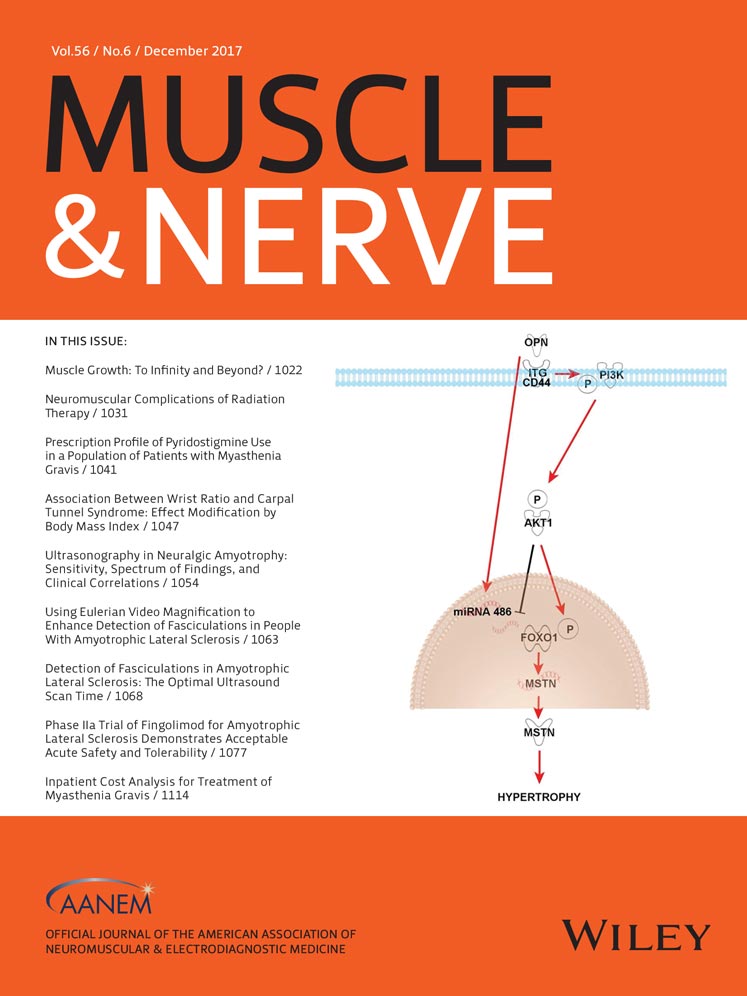Electrophysiologic features of POEMS syndrome compared with MGUS-related neuropathy
ABSTRACT
Introduction
Polyneuropathy, organomegaly, endocrinopathy, M-protein, and skin changes (POEMS) syndrome and monoclonal gammopathy of undetermined significance (MGUS) are paraproteinemic disorders that can cause demyelinating polyneuropathy. Herein we assessed the findings of nerve conduction studies (NCS) in patients with POEMS syndrome and MGUS-related neuropathy to determine whether the NCS characteristics can help differentiate between these conditions.
Methods
We enrolled 24 POEMS and 37 MGUS-related neuropathy patients. NCS parameters, including compound muscle action potential (CMAP), motor conduction velocity (MCV), and terminal latency index (TLI), were evaluated.
Results
Compared with MGUS-related neuropathy patients, POEMS syndrome patients demonstrated a greater reduction in both the upper and lower limb CMAPs and a greater reduction in the median and ulnar MCVs. The TLIs were significantly higher in POEMS patients.
Discussion
NCS can help distinguish POEMS syndrome from MGUS-related neuropathy. Reduced CMAPs, slow MCVs, and high TLIs are indicative of POEMS syndrome rather than MGUS-related neuropathy. Muscle Nerve 56: E73–E77, 2017




